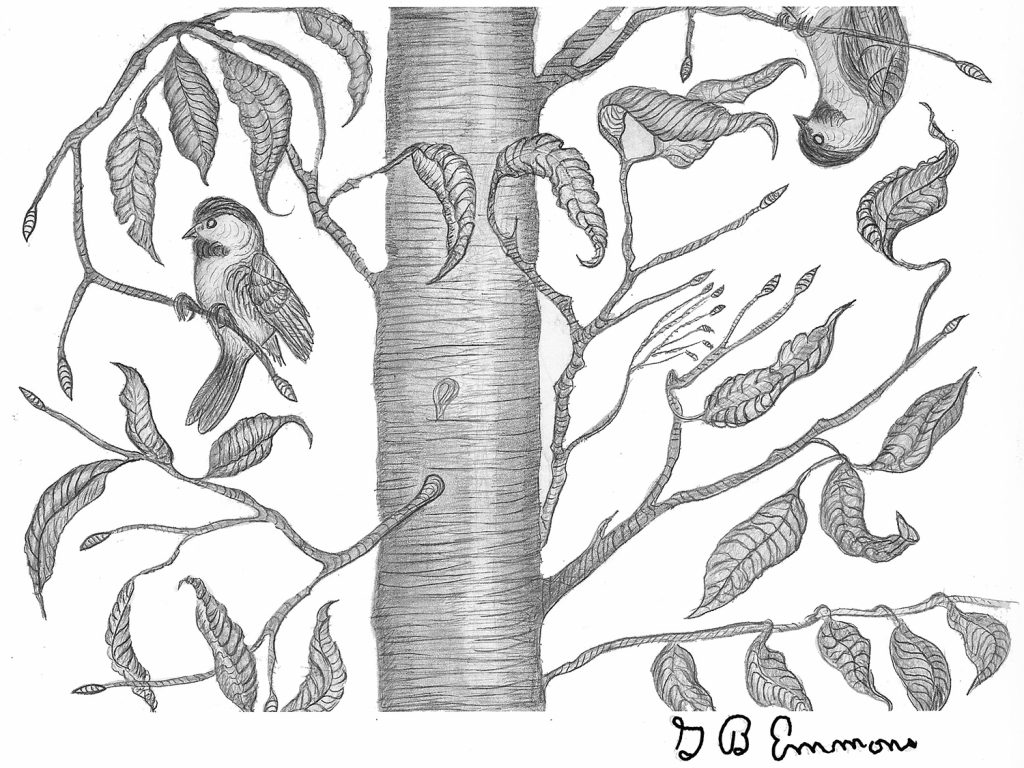The American Beech Tree is quite different from other deciduous species because, instead of dropping its leaves in autumn, it retains them attached to the branches until spring. Biologists label this delayed leaf shedding by the scientific term “marcescence.”
Apparently, the beech tree’s benefit from the phenomena is well founded. Marcescence foliage is a deterrent to browsing deer by hiding its buds behind clusters of dead leaves to secretly survive in position and launch new growth in the spring. When the leaves do drop, they deliver a rich compost of organic material for growth of new juvenile shoots under the parent tree. This residue can then create a trap to keep in late snow, like a fence, for needed moisture. Even a small amount can be beneficial in a dry season.
We all know that the foliage of trees is a vital life supporting system by a process called photosynthesis. When the leaf breathes, water is drawn up from the roots to be recombined into sugars and starches. This produces oxygen into the air for us all to breathe. But when the freezing temperatures of late autumn cut off this circulation of chlorophyll, it strangles their circulation.
They then morph from green into the spectacular flaming shades of bright red, deep orange, and yellow. This panorama of spectacular presentation draws tourists to the leaf peeping deciduous belts of color all the way up to Canada, whose national symbol is, appropriately, the red maple leaf.
Most naturalists agree that the annual autumn harvest of acorns and beechnuts are beneficial to many species of birds and animals, especially deer and turkeys. The beechnut is encased in a husk, but is very rich in protein and fat. This is appreciated and valued, especially during a hard winter.
If you enjoy traveling through the countryside looking for progression of the season, out of the corner of your eye you may see something that does not look quite right. If it is small, brown, and curled up with dead leaves, dropping and accumulating under a tree, it may be the renewal ceremony of the American beech featured in this article and illustration. Mother Nature’s programing has delayed it for a reason. Her evolutionary timing of past survival has proved that the conditions for regeneration are here, and it is indeed spring.
By George B. Emmons
